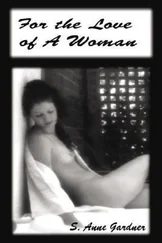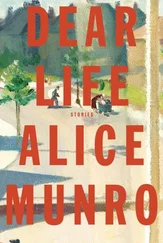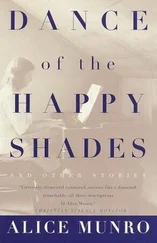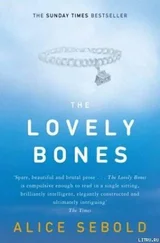Alice Munro - The Love Of A Good Woman
Здесь есть возможность читать онлайн «Alice Munro - The Love Of A Good Woman» весь текст электронной книги совершенно бесплатно (целиком полную версию без сокращений). В некоторых случаях можно слушать аудио, скачать через торрент в формате fb2 и присутствует краткое содержание. Жанр: Современная проза, на английском языке. Описание произведения, (предисловие) а так же отзывы посетителей доступны на портале библиотеки ЛибКат.
- Название:The Love Of A Good Woman
- Автор:
- Жанр:
- Год:неизвестен
- ISBN:нет данных
- Рейтинг книги:4 / 5. Голосов: 1
-
Избранное:Добавить в избранное
- Отзывы:
-
Ваша оценка:
- 80
- 1
- 2
- 3
- 4
- 5
The Love Of A Good Woman: краткое содержание, описание и аннотация
Предлагаем к чтению аннотацию, описание, краткое содержание или предисловие (зависит от того, что написал сам автор книги «The Love Of A Good Woman»). Если вы не нашли необходимую информацию о книге — напишите в комментариях, мы постараемся отыскать её.
The Love Of A Good Woman — читать онлайн бесплатно полную книгу (весь текст) целиком
Ниже представлен текст книги, разбитый по страницам. Система сохранения места последней прочитанной страницы, позволяет с удобством читать онлайн бесплатно книгу «The Love Of A Good Woman», без необходимости каждый раз заново искать на чём Вы остановились. Поставьте закладку, и сможете в любой момент перейти на страницу, на которой закончили чтение.
Интервал:
Закладка:
Jakarta
I.
Kath and Sonje have a place of their own on the beach, behind some large logs. They have chosen this not only for shelter from the occasional sharp wind-they’ve got Kath’s baby with them- but because they want to be out of sight of a group of women who use the beach every day. They call these women the Monica
The Monicas have two or three or four children apiece. They are all under the leadership of the real Monica, who walked down the beach and introduced herself when she first spotted Kath and Sonje and the baby. She invited them to join the gang.
They followed her, lugging the carry-cot between them. What else could they do? But since then they lurk behind the logs.
The Monicas’ encampment is made up of beach umbrellas, towels, diaper bags, picnic hampers, inflatable rafts and whales, toys, lotions, extra clothing, sun hats, thermos bottles of coffee, paper cups and plates, and thermos tubs in which they carry homemade fruit-juice Popsicles.
They are either frankly pregnant or look as if they might be pregnant, because they have lost their figures. They trudge down to the water’s edge, hollering out the names of their children who are riding and falling off logs or the inflatable whales.
“Where’s your hat? Where’s your ball? You’ve been on that thing long enough now, let Sandy have a turn.”
Even when they talk to each other their voices have to be raised high, over the shouts and squalls of their children.
“You can get ground round as cheap as hamburger if you go to Woodward’s.”
“I tried zinc ointment but it didn’t work.”
“Now he’s got an abscess in the groin.”
“You can’t use baking powder, you have to use soda.”
These women aren’t so much older than Kath and Sonje. But they’ve reached a stage in life that Kath and Sonje dread. They turn the whole beach into a platform. Their burdens, their strung-out progeny and maternal poundage, their authority, can annihilate the bright water, the perfect small cove with the red-limbed arbutus trees, the cedars, growing crookedly out of the high rocks. Kath feels their threat particularly, since she’s a mother now herself. When she nurses her baby she often reads a book, sometimes smokes a cigarette, so as not to sink into a sludge of animal function. And she’s nursing so that she can shrink her uterus and flatten her stomach, not just provide the baby-Noelle-with precious maternal antibodies.
Kath and Sonje have their own thermos of coffee and their extra towels, with which they’ve rigged up a shelter for Noelle. They have their cigarettes and their books. Sonje has a book by Howard Fast. Her husband has told her that if she has to read fiction that’s who she should be reading. Kath is reading the short stories of Katherine Mansfield and the short stories of D. H. Lawrence. Sonje has got into the habit of putting down her own book and picking up whichever book of Kath’s that Kath is not reading at the moment. She limits herself to one story and then goes back to Howard Fast.
When they get hungry one of them makes the trek up a long flight of wooden steps. Houses ring this cove, up on the rocks under the pine and cedar trees. They are all former summer cottages, from the days before the Lions Gate Bridge was built, when people from Vancouver would come across the water for their vacations. Some cottages-like Kath’s and Sonje’s-are still quite primitive and cheap to rent. Others, like the real Monica’s, are much improved. But nobody intends to stay here; everybody’s planning to move on to a proper house. Except for Sonje and her husband, whose plans seem more mysterious than anybody else’s.
There is an unpaved crescent road serving the houses, and joined at either end to Marine Drive. The enclosed semicircle is full of tall trees and an undergrowth of ferns and salmonberry bushes, and various intersecting paths, by which you can take a shortcut out to the store on Marine Drive. At the store Kath and Sonje will buy takeout French fries for lunch. More often it’s Kath who makes this expedition, because it’s a treat for her to walk under the trees-something she can’t do anymore with the baby carriage.
When she first came here to live, before Noelle was born, she would cut through the trees nearly every day, never thinking of her freedom. One day she met Sonje. They had both worked at the Vancouver Public Library a little while before this, though they had not been in the same department and had never talked to each other. Kath had quit in the sixth month of pregnancy as you were required to do, lest the sight of you should disturb the patrons, and Sonje had quit because of a scandal.
Or, at least, because of a story that had got into the newspapers. Her husband, Cottar, who was a journalist working for a magazine that Kath had never heard of, had made a trip to Red China. He was referred to in the paper as a left-wing writer. Sonje’s picture appeared beside his, along with the information that she worked in the library. There was concern that in her job she might be promoting Communist books and influencing children who used the library, so that they might become Communists. Nobody said that she had done this-just that it was a danger. Nor was it against the law for somebody from Canada to visit China. But it turned out that Cottar and Sonje were both Americans, which made their behavior more alarming, perhaps more purposeful.
“I know that girl,” Kath had said to her husband, Kent, when she saw Sonje’s picture. “At least I know her to see her. She always seems kind of shy. She’ll be embarrassed about this.”
“No she won’t,” said Kent. “Those types love to feel persecuted, it’s what they live for.”
The head librarian was reported as saying that Sonje had nothing to do with choosing books or influencing young people-she spent most of her time typing out lists.
“Which was funny,” Sonje said to Kath, after they had recognized each other, and spoken and spent about half an hour talking on the path. The funny thing was that she did not know how to type.
She wasn’t fired, but she had quit anyway. She thought she might as well, because she and Cottar had some changes coming up in their future.
Kath wondered if one change might be a baby. It seemed to her that life went on, after you finished school, as a series of further examinations to be passed. The first one was getting married. If you hadn’t done that by the time you were twenty-five, that examination had to all intents and purposes been failed. (She always signed her name “Mrs. Kent Mayberry” with a sense of relief and mild elation.) Then you thought about having the first baby. Waiting a year before you got pregnant was a good idea. Waiting two years was a little more prudent than necessary. And three years started people wondering. Then down the road somewhere was the second baby. After that the progression got dimmer and it was hard to be sure just when you had arrived at wherever it was you were going.
Sonje was not the sort of friend who would tell you that she was trying to have a baby and how long she’d been trying and what techniques she was using. She never talked about sex in that way, or about her periods or any behavior of her body-though she soon told Kath things that most people would consider much more shocking. She had a graceful dignity-she had wanted to be a ballet dancer until she got too tall, and she didn’t stop regretting that until she met Cottar, who said, “Oh, another little bourgeois girl hoping she’ll turn into a dying swan.” Her face was broad, calm, pink skinned-she never wore any makeup, Cottar was against makeup-and her thick fair hair was pinned up in a bushy chignon. Kath thought she was wonderful looking-both seraphic and intelligent.
Читать дальшеИнтервал:
Закладка:
Похожие книги на «The Love Of A Good Woman»
Представляем Вашему вниманию похожие книги на «The Love Of A Good Woman» списком для выбора. Мы отобрали схожую по названию и смыслу литературу в надежде предоставить читателям больше вариантов отыскать новые, интересные, ещё непрочитанные произведения.
Обсуждение, отзывы о книге «The Love Of A Good Woman» и просто собственные мнения читателей. Оставьте ваши комментарии, напишите, что Вы думаете о произведении, его смысле или главных героях. Укажите что конкретно понравилось, а что нет, и почему Вы так считаете.












